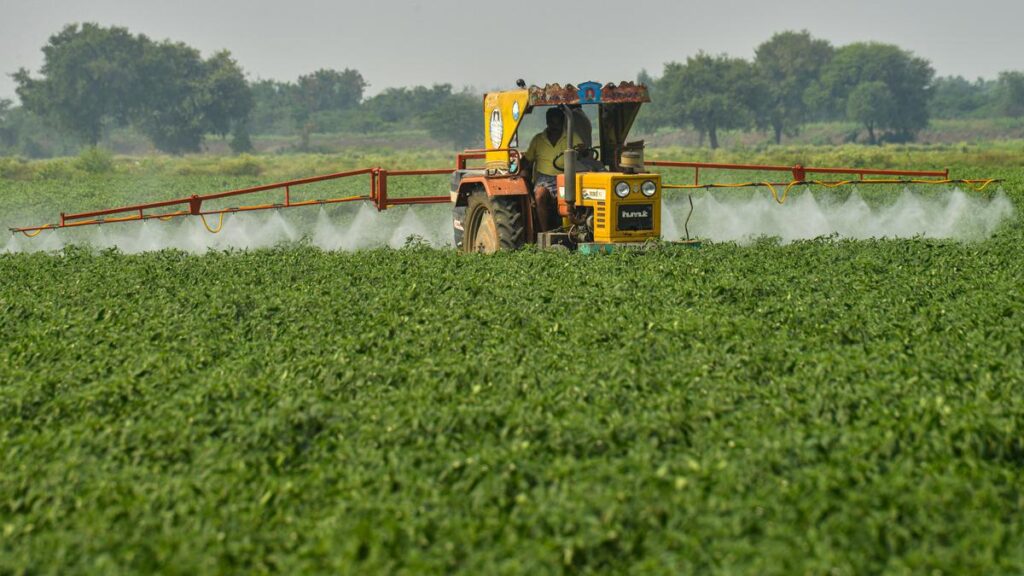
With India’s farm sector remaining resilient to erratic weather conditions, the government is hopeful of having bountiful food grain production even as it tries hard to keep a lid on food inflation ahead of general elections in 2024.
From floods to droughts, extreme weather events this year have not only raised fears over foodgrain production but also created an artificial supply scare that forced the government to take a slew of pre-emptive measures, including export curbs on certain commodities.
Besides, the government subsidised the sale of a few commodities to improve domestic supply and arrest the sharp spikes in retail prices of wheat, rice, edible oils, pulses, tomato, and onion.
While the efforts to control food prices are still on, the government is closely watching the prospects of rabi (winter) crops, especially wheat and pulses, which are sown now and will be ready for harvest closer to 2024 general elections in April-May.
Food inflation remained at an elevated level throughout the year after touching a low of 2.96% in May. In November, it stood at 8.7%.
Agricultural crops are grown in two seasons — kharif (summer) and rabi (winter) — between July 2023 and June 2024. Kharif crops have been harvested while rabi crops are sown now.
The Agriculture Ministry has come out with its initial estimates which do not give a positive picture due to the projection of a likely slight drop in the 2023 kharif food grain output at 148.56 million tonnes as against 155.7 million tonnes in the year-ago period due to “below average” rainfall in the four-month (June-September) monsoon season amid strengthening of El Nino conditions.
Karnataka, Maharashtra and Andhra Pradesh faced drought conditions while Tamil Nadu faced floods due to cyclone Michaung, impacting kharif crops and farmers’ livelihoods.
The Ministry’s first estimate showed that the 2023 kharif production of rice, maize, moong, oilseeds, sugarcane and cotton was lower than the year-ago period. The estimate for rabi crops output is yet to come.
However, Ministry Officials are of the view that the kharif food grain production estimates will be revised positively by the time the fourth and final estimates are prepared.
“Climate change is a reality today. However, our agri sector has shown resilience to extreme weather events. The government is promoting climate-resilient seeds. With these measures, we are hopeful of achieving a bountiful harvest in 2023-24,” Agriculture Secretary Manoj Ahuja told PTI.
Drought and flood-tolerant seeds were promoted during the kharif season while in the ongoing rabi season, heat-resistance varieties have been sown in more than 60% area, he added.
The Secretary, however, mentioned that the slightly lower kharif food grain output projected for this year is not a cause for concern.
Last year too, the country faced erratic weather conditions and yet could achieve a record food grain production of 329.68 million tonnes in the 2022-23 crop year (July-June) as per the Ministry’s final estimates.
However, a sudden temperature rise sparked concern about last year’s wheat output leading to an export ban in May 2022 to check high domestic prices.
When the final estimates were released, the wheat output was pegged at a record 110.55 million tonnes for 2022-23 compared to 107.7 million tonnes achieved in the previous year but slightly lower than the third estimate.
Asserting that wheat sowing is progressing well this year, Agriculture Commissioner P K Singh said, “we have further increased the wheat area under climate resilient seeds which should help face terminal heat.”
Area sown to wheat has reached 30.86 million hectares till December 22, marginally lower than 31.4 million hectares in the year-ago period, because of the delay in paddy harvesting, he said.
“The government has started issuing weekly advisories to farmers to prepare them to face the adverse weather conditions,” he added.
India is the world’s second-largest producer of wheat and rice, the two commodities which the government buys directly from farmers to ensure them at least a Minimum Support Price (MSP), maintain a buffer stock for implementation of welfare schemes and use it for market intervention to control retail inflation.
In the year ahead of the 2024 general elections, the government walked a tightrope to balance farmers’ and consumer interests. To woo farmers, paddy MSP was hiked by ₹143 to ₹2,183 per quintal for this year, the second steepest increase in the last decade. The highest increase in the paddy MSP in the last 10 years was by ₹200 per quintal in 2018-19.
Similarly, wheat MSP was raised by ₹150 to ₹2,275 per quintal for the 2023-24 crop year, which in fact was the highest increase by the Narendra Modi-led government since it came to power in 2014.
The MSP of pulses and oilseeds were also raised keeping in mind the need to become self-reliant and reduce dependency on imports. The government also did not leave any stone unturned to promote the production and promotion of millets in the international year of millets.
Not only wheat and paddy growers but even farmers growing horticultural crops like tomato and onion faced weather-induced challenges.
Unseasonal rainfall led to damage of the crop in some states, creating a supply crunch and pushing up retail prices up to ₹200 per kilogramme in July in most parts of the country and the government for the first time had to procure tomato and retail at subsidised rates. As a result, now, retail tomato prices are ruling stable at ₹30 per kg in Delhi.
In the case of onion too, the government was on guard and began the sale of buffer onions at subsidised rates in cities where prices had shot up sharply in the last few months. As prices showed significant movement last month, the government banned exports till March next year to improve domestic availability.
The government prioritised balancing the interests of farmers and consumers while continuing to support the farming community through different schemes like PM-KISAN, Pradhan Mantri Fasal Bima Yojana (PMFBY), and Kisan Credit Card.
The government also extended the free distribution of ration to 81 crore poor under the public distribution system for the next five years.




